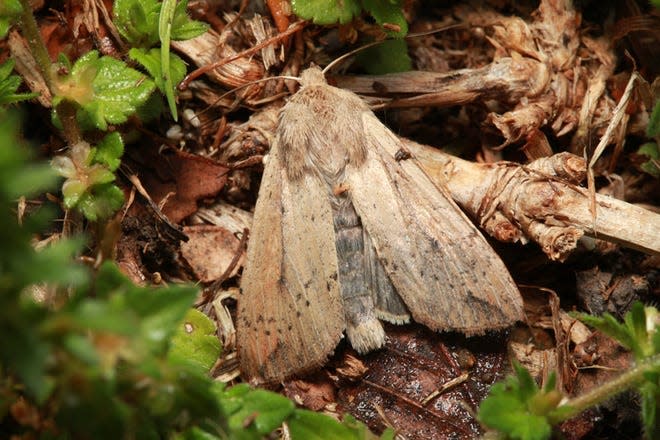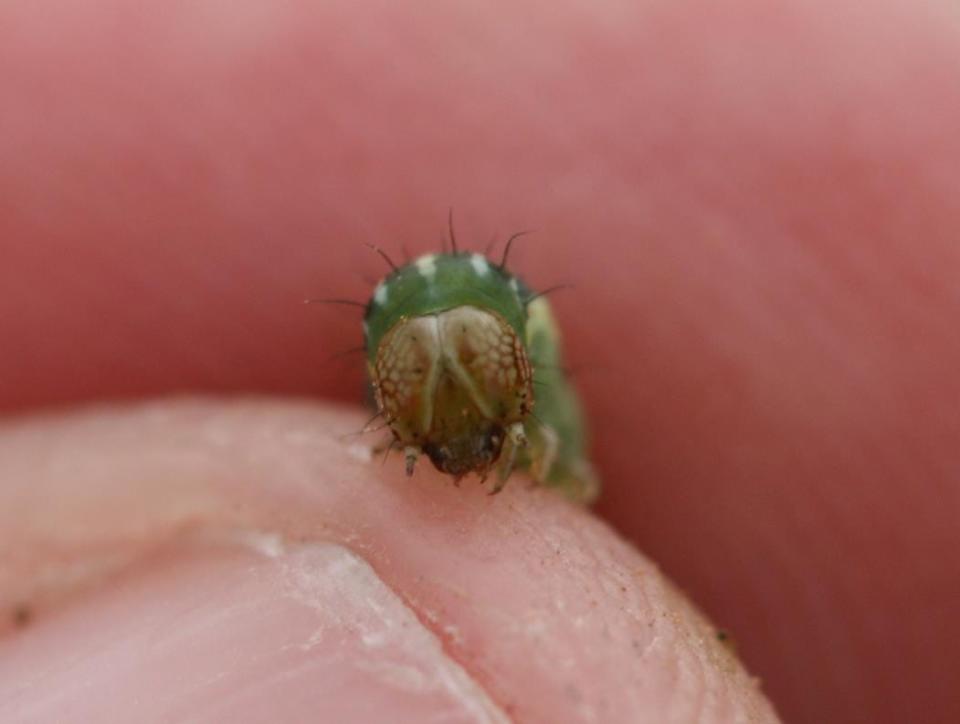Opinion: In defense of armyworms. They aren't exactly the scourges of lawns.
Note: This column has been updated by the writer's request to reflect the that there is uncertainty about fall armyworms being native to Ohio.
Recent articles have depicted the fall armyworm as an unwelcome visitor, a scourge of lawns, and a pest requiring prompt insecticide application.
That’s one way to look at it, but not the only way.

I want to share a rarely heard perspective on the fall armyworm.
A little background first: The fall armyworm is the caterpillar of the fall armyworm moth, a native North American species that arrives in Ohio from the south in late summer and persists until the onset of cold weather.
More: Fall armyworms march across Ohio, causing damage to crops and grass
Conditions have been right for an unusually high population this year, leading folks to take notice as the caterpillars consume their favorite diet: our lawns.
How can you know if your lawn is housing fall armyworms?

One tip is to look for increased bird activity as the birds devour the caterpillars. The fall armyworm presence in Ohio is exceptionally well-timed for birds because it coincides with their fall migration, when the birds need extra fuel for their journey south.
The moth itself is also an excellent food source for birds.
In the U.S. there has been a 29% reduction in bird abundance since 1970, and the many species that rely on moths have suffered some of the steepest losses. Fall armyworms can therefore serve as a crucial food source for imperiled bird species.

Surely this is a good thing, but what about the lawn damage? Although the caterpillars can turn a lawn brown, they don’t directly kill the base of the grass which sends up new shoots
As long as the base stays hydrated then the grass can regrow. Running a sprinkler during the heat of the day can help ensure that the grass rejuvenates.
This may be practical for some, but it won’t work for those with large lawns, or for people who aren’t around to run a sprinkler midday. So how can these folks judiciously respond to fall armyworms in their yards?
To answer this, we should first acknowledge two points: Ohio wildlife needs our help, and we can offer that help through what we choose to plant in our yards.
Although lawn supports fall armyworms, it supports little else.
In order to help moths, butterflies, bees, and birds, the best strategy is to fill our yards with the plants that these creatures have evolved to utilize: Ohio native plants.

With this approach, lawn is still a useful groundcover for paths between native plantings and other places of foot traffic. The extent of the lawn, however, will be considerably reduced. When fall armyworms descend upon a yard such as this, any resulting damage is similarly reduced, and to speak from my own experience, frankly welcome.
I’ll elaborate. Last spring some friends and I started a pollinator garden on a vacant lot through the City’s land bank garden program.
Watching bees and butterflies busily gain nourishment from the plants that one has planted is a very satisfying experience, I can attest.
More: Letters: Afghan airlift, COTA, teen drivers, armyworms
Ever since hearing about the fall armyworms I have actually been hoping to find them at the garden, and to know that the space I’m taking care of is helping Ohio wildlife in another, unexpected way.
If anything can soften one’s heart to the fall armyworm, it’s gardening for wildlife.
David J. Tomashefski is a research associate at Ohio State University's Soil, Water, and Environmental Lab. SWEL is a service laboratory within the School of Environment and Natural Resources. Tomashefski holds a Master of Science in environment and natural resources with a specialization in ecological restoration from OSU.

This article originally appeared on The Columbus Dispatch: David J. Tomashefski: Benefits of fall armyworms and why you want them

